Green IT is becoming increasingly important in an increasingly digitalized world. By using sustainable information technology, companies can not only improve their environmental footprint, but also save costs in the long term. Energy-efficient servers, laptops, and monitors can significantly reduce power consumption while also extending the lifespan of the devices. To ensure that IT does not become another climate threat and contributes to climate protection, the concept of Green IT is being promoted.
By using green IT, which is more sustainable and environmentally friendly, you also benefit from significant cost savings.
In this blog post, you can find out exactly what you can expect from the term Green IT and how you can make use of it.
Green IT, also known as sustainable information technology, encompasses all measures aimed at reducing the energy consumption of IT systems and reducing their environmental impact. This involves not only the selection of environmentally friendly devices, but also the efficient operation and responsible disposal of IT products.
This involves acting from two different perspectives:
There is no universally valid definition or fixed rules for green IT; rather, it is a collective term. However, the meaning and associated implementation can be derived from the general definition of sustainability.

Integrate a holistic and IT sustainability strategy into your company and benefit from ecological, social and economic advantages.
So what does Green IT look like in practice and to what extent can you influence its implementation? The answer depends on your role in the overall context: Are you a manufacturer of IT hardware? Do you program software for companies? Are you in the process of setting up an IT infrastructure?
Depending on where you are and what tasks you take on, you have different options for exerting influence. Refurbishment is a central point when it comes to sustainability. It describes the process of restoring products to full working order. You can also find refurbished hardware in our store. You can also find more information in our blog post “Used IT hardware: how useful it is and how you can benefit from it”. Defective parts are also replaced and the product is cleaned to make it saleable again. You can find more information on IT cleaning in our blog post “IT cleaning - its time requirements and aspects to consider”.
You can also positively influence the service life of devices by using them under optimum conditions, including, for example, devices with cooling requirements such as uninterruptible power supplies, which need to be cooled accordingly.
Obsolescence is an important factor when it comes to the sustainability of IT devices. This aspect primarily covers the product life cycle, including the manufacture and disposal of products. Obsolescence is therefore the process by which products age and therefore lose value.
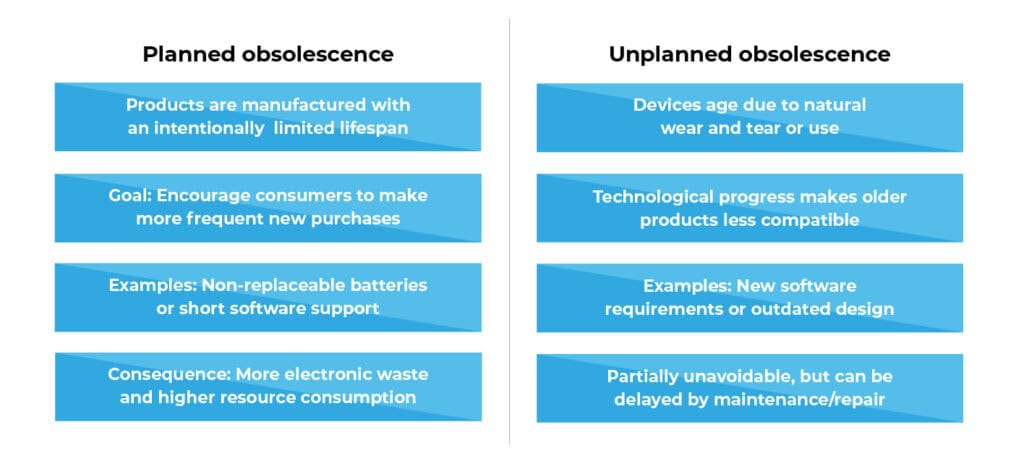
Obsolescence can be divided into planned and unplanned obsolescence. The latter can be caused by natural wear and tear or influenced by technological progress or fashion. In the case of planned obsolescence, products have a deliberately limited lifespan. This means that consumers are constantly forced to buy new products. Planned obsolescence is therefore a negative influence in the area of green IT, as it increases the amount of electronic waste. Products are therefore replaced instead of repaired. Reducing planned obsolescence can lead to a longer product lifespan, resource savings and a reduction in the CO2 footprint.
A key approach to tackling obsolescence is extending the lifespan of IT hardware. Companies are increasingly choosing refurbished devices, as they are technically reconditioned and fully functional. This significantly prolongs the life of electronic products, helping to reduce electronic waste. Repairability also plays an important role: devices with replaceable components such as batteries, memory, or power supplies support a sustainable IT strategy. In addition, sustainable procurement is a crucial part of modern IT strategies. Companies are placing greater emphasis on environmental certifications such as Energy Star or Blue Angel. By consistently implementing these measures, obsolescence can be actively reduced.
Even working from home on a regular basis has a noticeable effect on your electricity bill. You can expect to pay just under 90-120 euros more per year. In companies, these costs not only add up per employee, as a professional IT infrastructure comprises far more hardware and software than a home office. Saving electricity costs is often the decisive factor in implementing green IT, but in terms of sustainability, other factors are also important. After all, these costs are caused by a correspondingly high energy requirement (not always from renewable sources). This is accompanied by CO2 emissions.
One factor is the use of green electricity, as this can greatly reduce the CO2 footprint.
Another factor is the use of waste heat, as a lot of heat is generated in server rooms or data centers. If this heat is recovered, energy consumption can be reduced.
If you have ever entered a server room or even just unscrewed a computer, you will also come across a lot of metal - and therefore non-renewable raw materials. The extraction and processing of these raw materials has a major impact on climate protection.
A Bitkom study from 2022 reveals: servers represent the pinnacle of energy consumption in IT.

Thanks to the large share of renewable energy, the resulting greenhouse gas emissions showed a decline from 2018-2020. However, CO2 emissions rose again in 2021 and 2022 due to the higher proportion of coal in the German energy mix. (see German data centers continue to grow and become more efficient, as at 28.08.2023; only in german).
In a survey conducted as part of the above-mentioned study, the majority of operators of large data centers also stated that they expect them to grow. IT space, the number of servers and the associated electricity consumption and greenhouse gas emissions are therefore expected to continue to rise.
Other IT devices also consume a lot of electricity. Another example is network switches, which have to run continuously for a network to function. You can find out how you can save electricity and reduce costs here in our blog post “Network switch: reduce power consumption and save costs”. We offer a wide range of refurbished IT devices, including switches, servers, routers and firewalls.
There have been awards for environmental protection for some time now. Some of these also apply to IT. So far, however, there is no official regulation that firmly defines Green IT. However, you can use the strategy of the Federal Ministry for the Environment, Nature Conservation, Nuclear Safety and Consumer Protection as a guide. This offers you a recommendation for action to implement the Green IT Initiative. You can also look out for the relevant Green IT seals when purchasing new components.
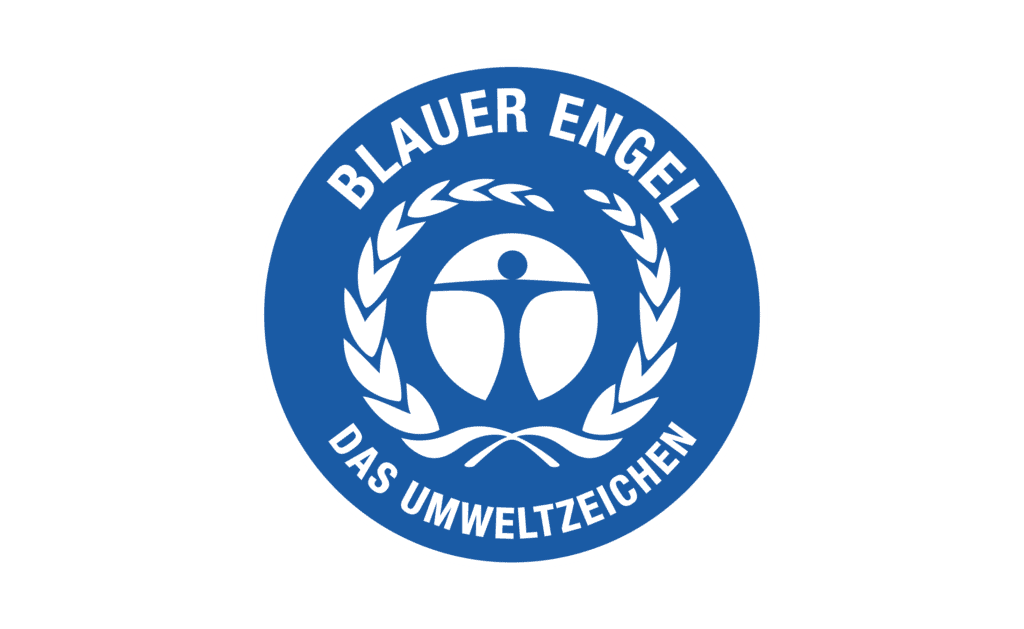
The Blue Angel (Blauer Engel, as of 04.09.23), for example, is an environmental label of the Federal Government and part of the Federal Ministry for the Environment, the Federal Environment Agency (UBA), the Environmental Label Jury and RAL gGmbH. Data center operators can receive this label if they implement appropriate measures.

Energy Star label was created in 1992 by the US Environmental Protection Agency and certifies energy-efficient IT devices worldwide, including servers, UPS systems and computers. The European Community has been involved since 2002.
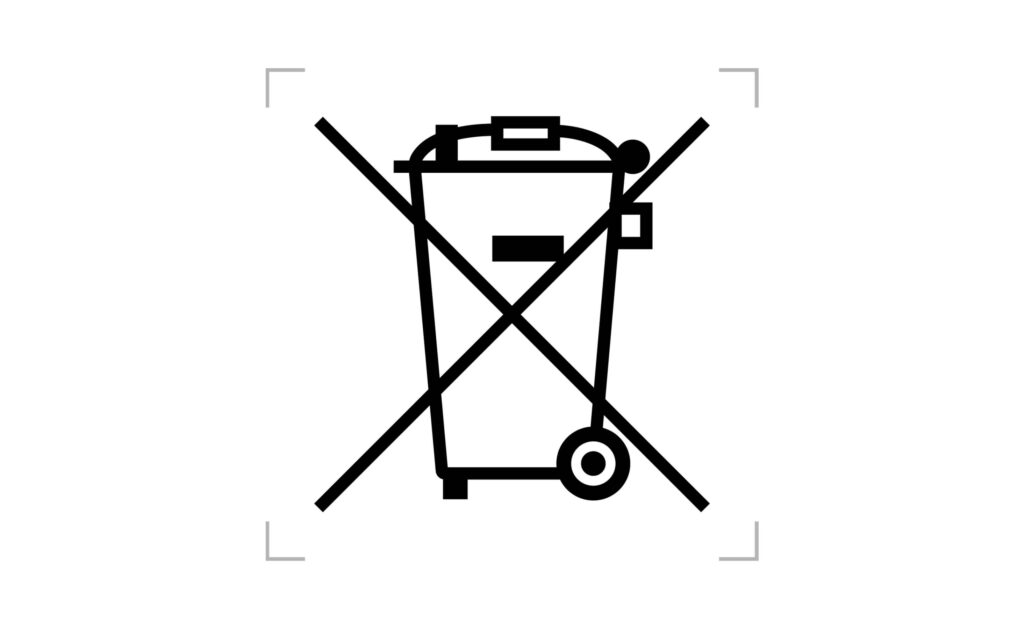
The WEEE Directive 2012/19/EU (Waste of Electrical and Electronic Equipment) came into force on August 14, 2012. This directive is known as WEEE2 and aims to ensure the distribution and proper take-back and disposal of waste electronic equipment in the EU. All electrical appliances sold must be registered according to WEEE2 in the EU.
In addition, the Ecodesign Directive (officially 2009/125/EC) defines the requirements for the environmentally friendly design of “energy-related products” under European law. This also includes systems and devices used in the IT sector.
The RoHS Directive 2011/65/EU aims to limit substances such as lead or chromium to maximum concentration values. This restricts hazardous substances in IT equipment for all EU member states. This promotes the recycling of old electrical appliances and minimizes their impact on the environment.
Benefits of Green IT
Challenges of Green IT
It is crucial that companies and individuals learn about the importance of sustainability through educational measures. These measures include training programs, workshops or information campaigns that not only impart technical knowledge about environmentally friendly hardware and software, but also the benefits of sustainable IT use.
Smart metering covers the use of resources such as water, gas and electricity. An intelligent electricity meter is used to precisely monitor energy consumption. The data is recorded very precisely and can therefore be improved. Smart metering therefore promotes a sustainable energy supply.
Smart metering can also be ideally combined with energy-efficiency monitoring and automated management systems. This allows companies not only to measure the energy consumption of individual devices, but also to analyse trends, set energy targets, and derive optimisation measures. Another advantage is the ability to identify energy-intensive devices early, before they lead to unnecessarily high costs. This is particularly beneficial in data centres or large IT environments, enabling a significant reduction in the power consumption of servers, UPS systems, and cooling solutions.
Sustainability is widely discussed in public. It is therefore not news that appropriate measures are necessary. However, not all companies have yet discovered that information technology can also be green. Digitalization helps to open up new opportunities for better resource efficiency and environmentally friendly work.
In addition to the obvious benefits - environmental protection, economic efficiency, social components - you also benefit because you are one step ahead of your competitors.
We also work with manufacturers who are committed to green IT and place great value on sustainability. These include companies such as Cisco, HPE Aruba and Juniper. In addition, we offer refurbished IT equipment from various brands, including APC and Eaton, which place particular emphasis on sustainability. On our website you will find a comprehensive and sustainable product portfolio from these manufacturers.
Would you like to find out more about implementing green IT in your company? Contact us for an individual consultation on sustainable IT and find out how you can benefit from the advantages of environmentally friendly technologies. With Green IT, you can give your image a new direction, save money and make a valuable contribution to the common good. That's worth considering, don't you think?
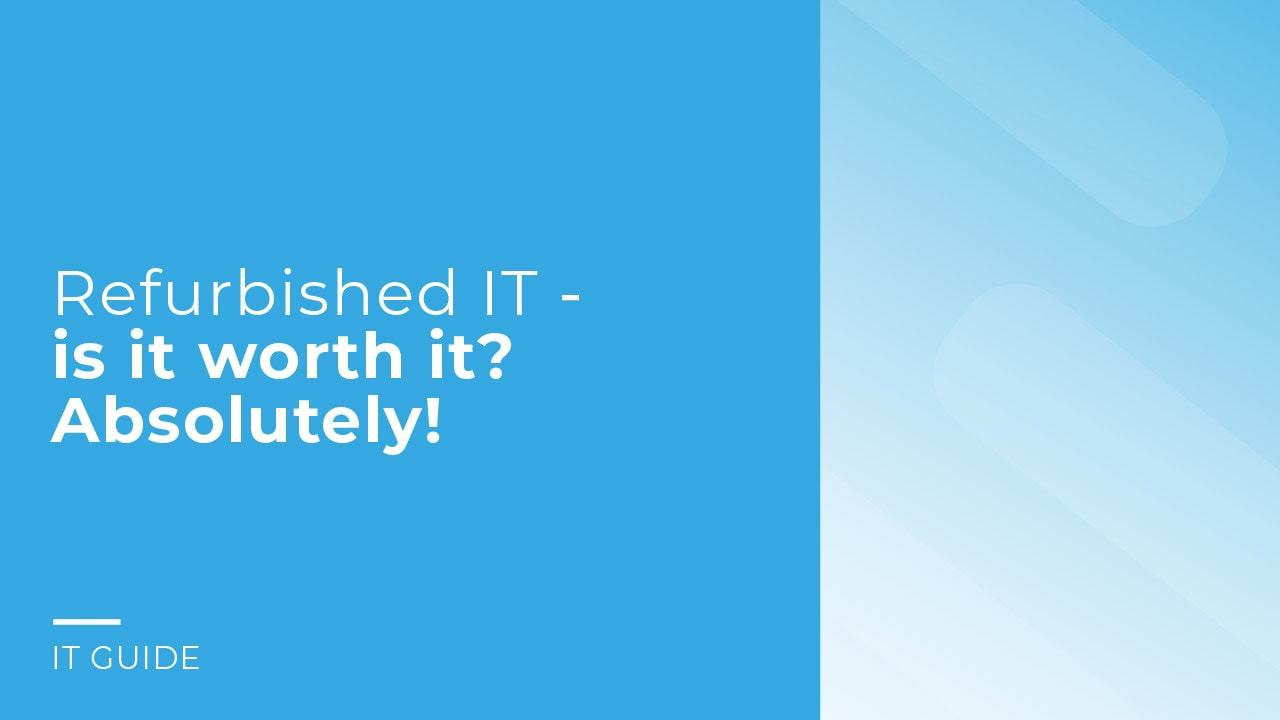
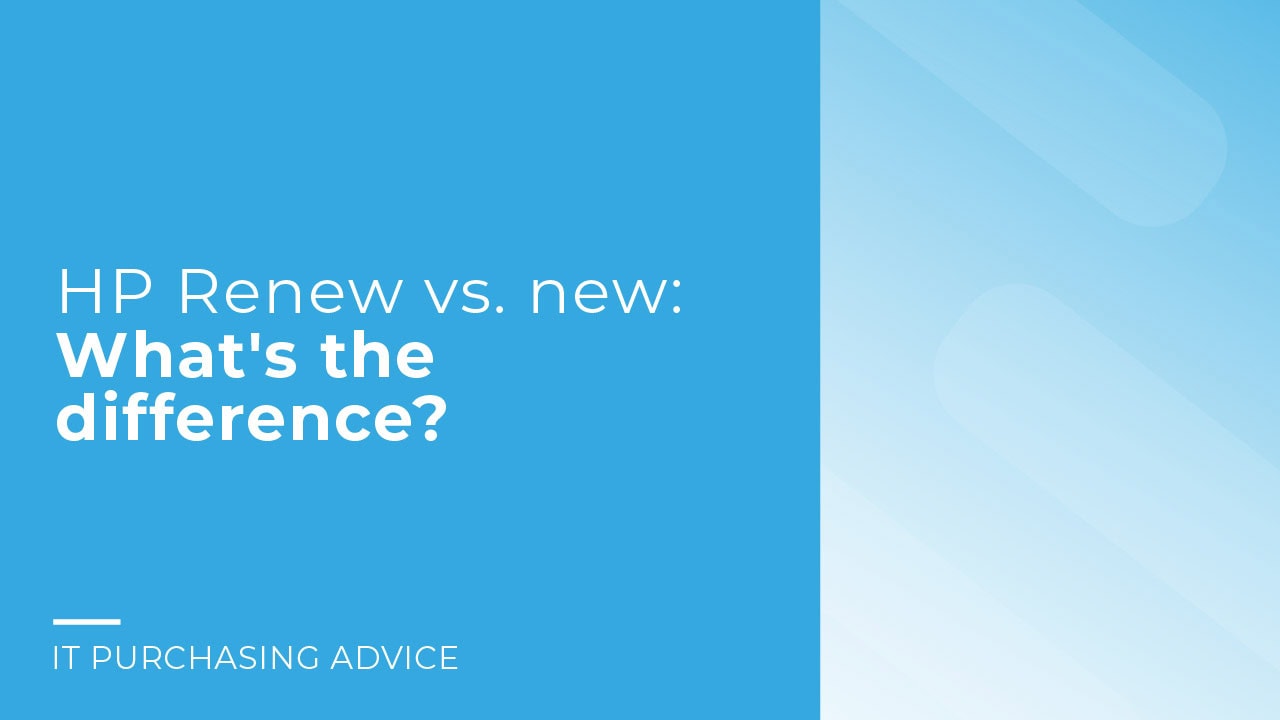
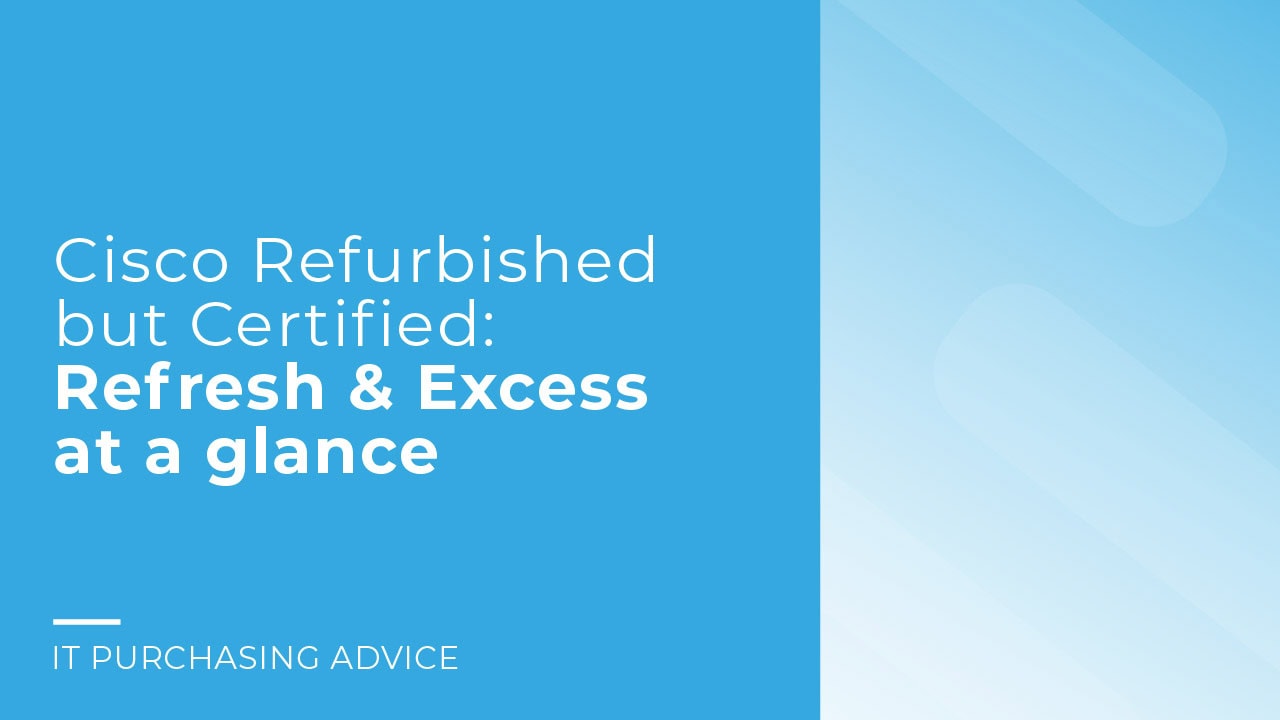
The disposal of IT equipment is a crucial factor in contributing to green IT. Responsible disposal and recycling reduce electronic waste and promote the reuse of valuable materials such as gold, silver and copper. This not only conserves resources, but also minimises pollutants such as lead and mercury. Refurbishment can also extend the product life cycle of IT equipment, so that new products are not necessarily required every time. The disposal of IT equipment can take the form of take-back or recycling programmes, refurbishment, upcycling or the recycling of electronic waste.
Green IT offers numerous advantages for companies, especially when it comes to saving costs. By using energy-efficient IT systems, a company's energy consumption can be significantly reduced. In addition, the ecological footprint is reduced and social and societal responsibility is assumed.
Green IT can be strategically integrated into company processes by:
Green IT improves the productivity and efficiency of companies by reducing energy consumption, extending the service life of IT equipment, optimizing processes and reducing the need for physical hardware.
Green IT promotes the digital transformation of companies by increasing efficiency, reducing costs, establishing sustainability as a competitive advantage and supporting compliance with regulatory requirements.
Green IT helps to reduce CO2 emissions and energy consumption, resulting in a lower environmental impact. It also helps companies to comply with legal requirements and environmental standards, which reduces the risk of penalties and legal consequences.
